7 expert tips for growing, pruning and harvesting pears, from Le Manoir
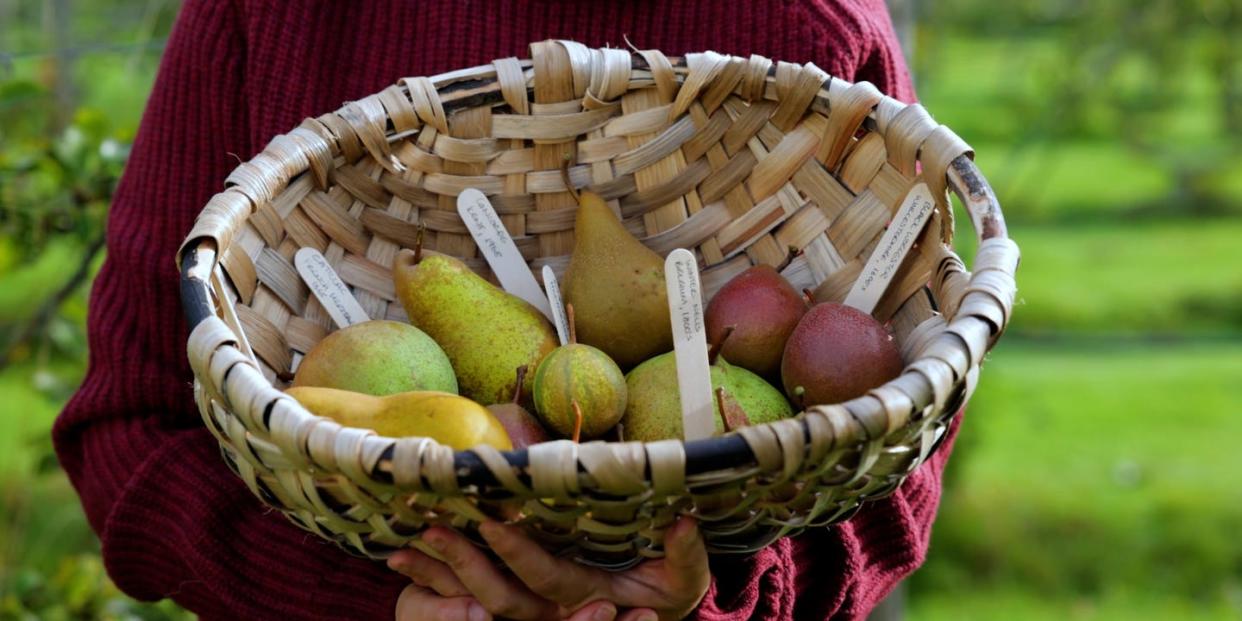
As part of Country Living’s new Plot to Plate series, we’ll hear from Raymond Blanc and the team at Le Manoir aux Quat'Saisons, on how to grow, prune and harvest the season’s very best produce and ensure these ingredients shine in the kitchen and on the table.
Raymond tells us: "We will take one single ingredient and show you how to celebrate it, grow it, love it, look after it, cook it, and enjoy it with friends around the table.”
For the first instalment of our Plot to Plate series, we're focussing on pears, with Le Manoir’s Head Orchard Gardener Paula Fleming – who looks after 30 different varieties of the fruit on the hotel’s grounds.
The humble pear can be the star of the show in a dessert, the backbone of a chutney, or an unexpected addition to a salad, with its aromatic, floral and sweet-tart notes.
Biting into a juicy, sweet and fragrant pear is one of the delights of autumn and, if you’ve always wanted to cultivate your own, Paul shares seven expert tips for growing, pruning and harvesting the fruit…
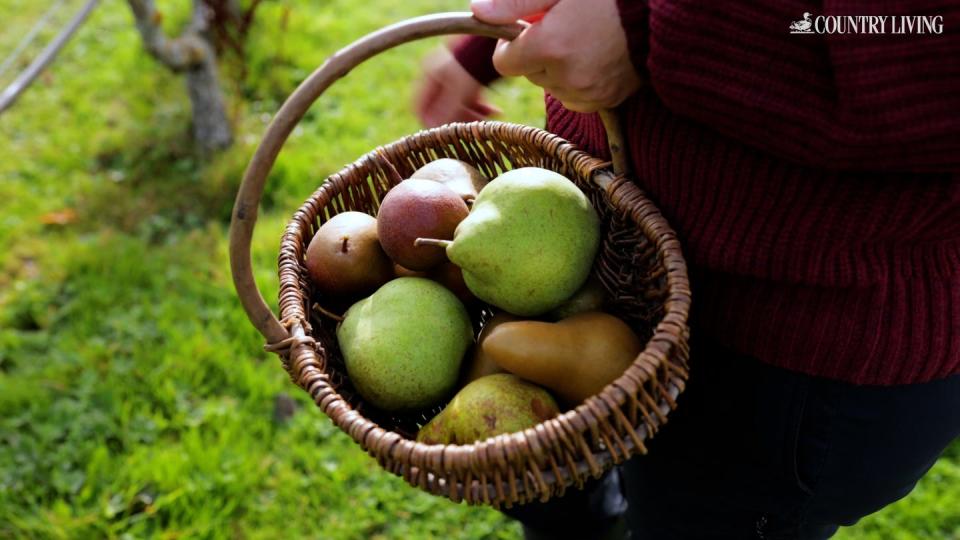
Plant it as soon as possible
If you're buying a bare root plant, you need to get it in the ground as soon as you have picked it up from the nursery or it arrives at your home, explains Paula.
She adds: “If you're not able to do that straight away, put it in a bucket of water, but still try to get them in the ground as soon as possible.
“If you've bought a tree that is in a pot, you can plant that all year round. You don't have to wait for a certain season.”
Don’t position a new tree under an old one
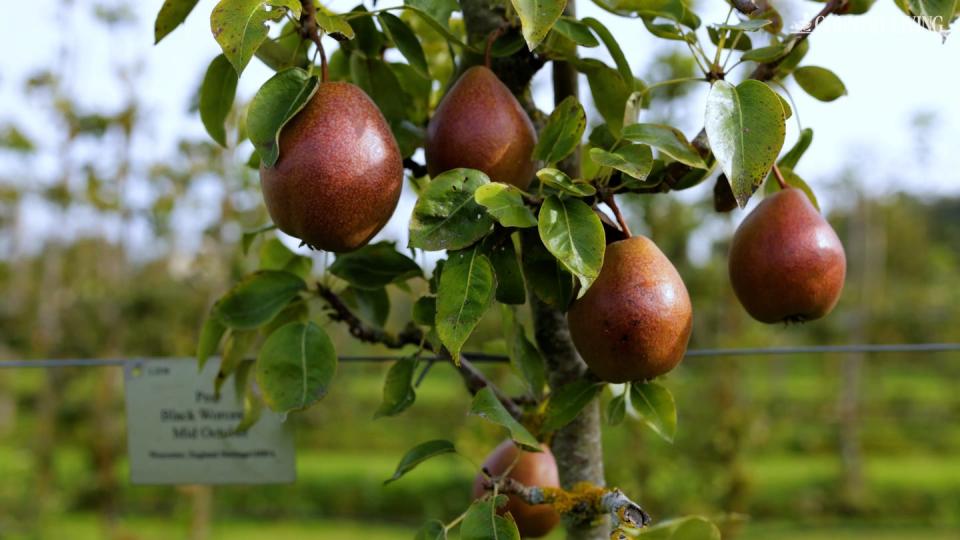
“When you're deciding where to plant your pear tree, it's best not to put it underneath a big old tree – because it will take up your nutrients,” adds Paula.
In terms of the location in your garden, Paula adds that ‘pears are quite forgiving’ but do need some sun – so they can be planted in either a partially shaded area or a sunny spot.
Press the neck of the pear

“When you harvest your pears, the best time of year depends on varieties and this can vary quite a lot – really any time between September and November.”
But Paula stresses that, unlike apples, pears ripen from the inside out, which means you're not going to instantly know from the outside whether it's ready.
Press the neck and if there’s a bit of give, even if it’s firm on the body, then it’s time to pick.
And if it's soft on the outside, then it's probably too far gone. “Unless you're going to eat it straight away, There's no way you can store it if it's got to this point” she adds.
Also, you need to be able to easily lift a pear off the tree and be sure to always store the fruit with the stem on.
Find your one year’s growth and cut a third off
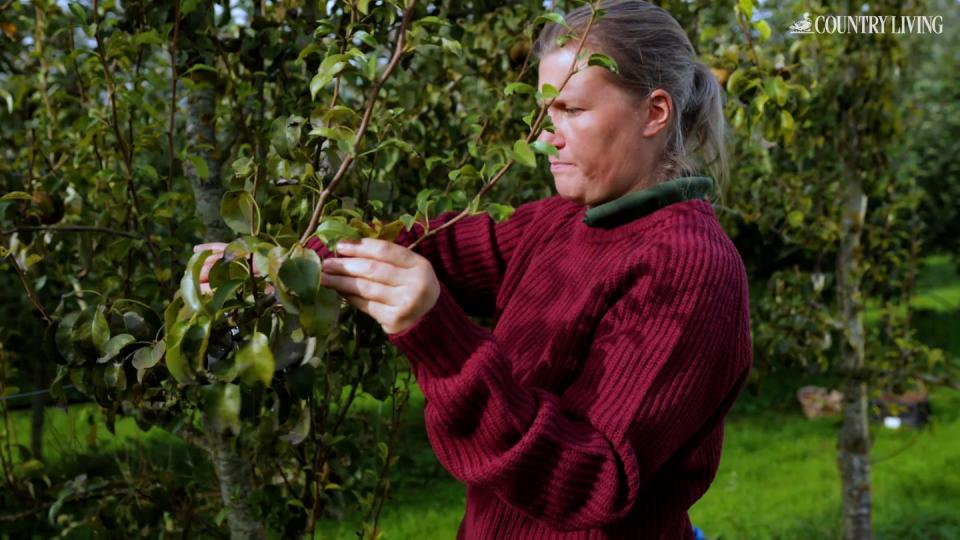
“Everyone's a bit scared of pruning, but you shouldn't be,” assures Paula. “It's very easy and you will not kill the tree by pruning it. You need to put more air and light into the tree – that is the point of pruning.
“You need to look for growth rings on the tree and that will give you an indicator of how old that growth is.”
Look for a one-year growth from the tip and once you’ve found it, cut a third off.
Prune when the tree is dormant
"You need to do your pruning when the leaves have fallen off the tree – that's what you're looking for. That way, you can see any disease that needs cutting out," continues Paula.
She stresses it's vital to ensure the tree is dormant and is not still growing when you're doing it.
"You can do this up to March or April," she adds. "But, bear in mind that in the UK, our seasons are very different all around the country. So really read your local weather because the south of the country is very different to Scotland."
Birds are your friends
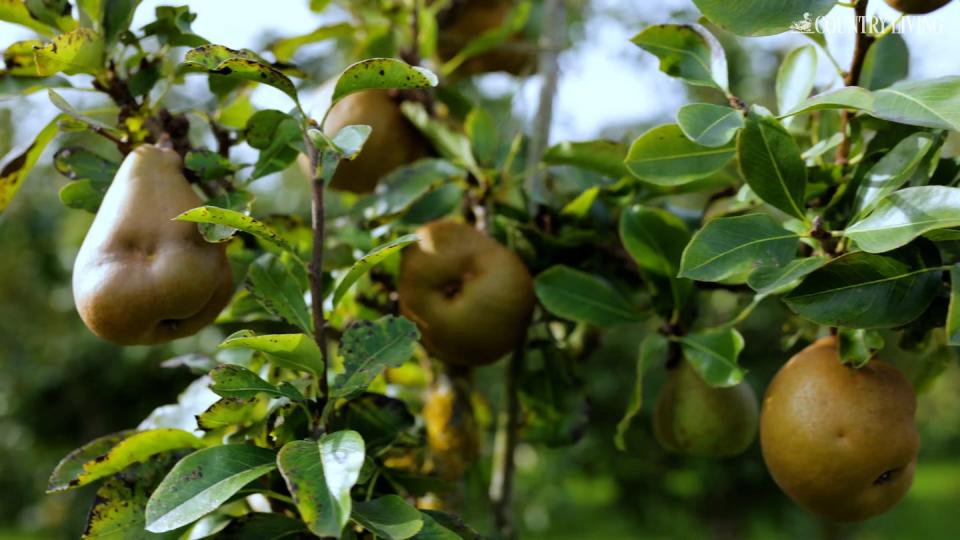
Most gardeners are cautious of birds destroying home-grown produce, but Paula points out that they're actually helping in their own unique way.
"We accept the birds are actually helping us with our pest control around the orchard. So they are actually eating our caterpillars and aphids, which are harming the rest of the fruit – sometimes you need these pests to get the benefits."
Paula adds that even if you do have bird pecks on your pears, they are still good to eat. "We have a minimal wastage policy at our orchard – you can still eat it, juice it, cut it out and cook with it," she says.
Put a pear next to a banana to ripen
Paula says this isn’t a myth – if you put a banana next to a pear it will ripen quicker. This is because bananas give off ethylene gas, and the extra exposure induces ripening in pears.
You Might Also Like


